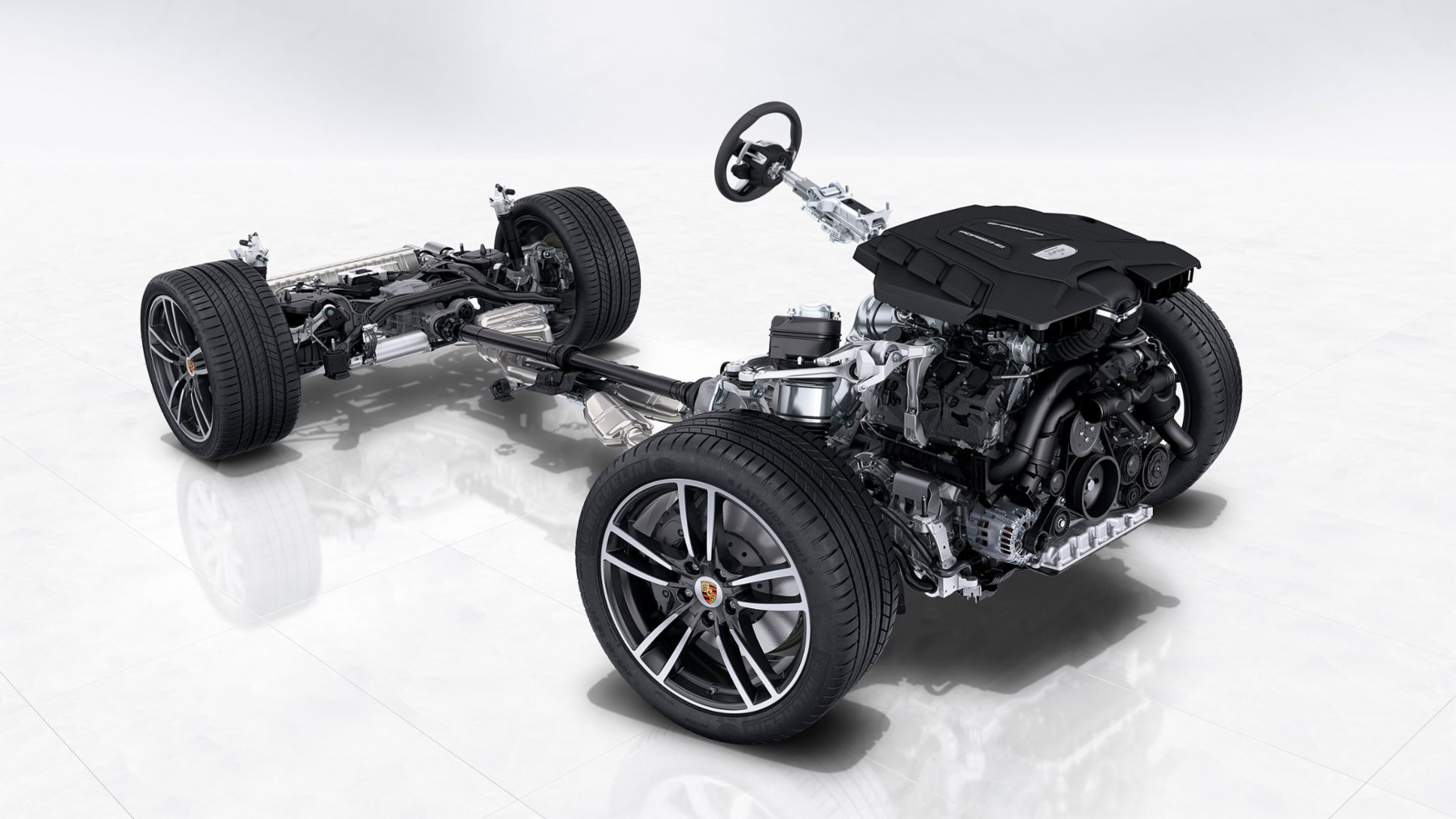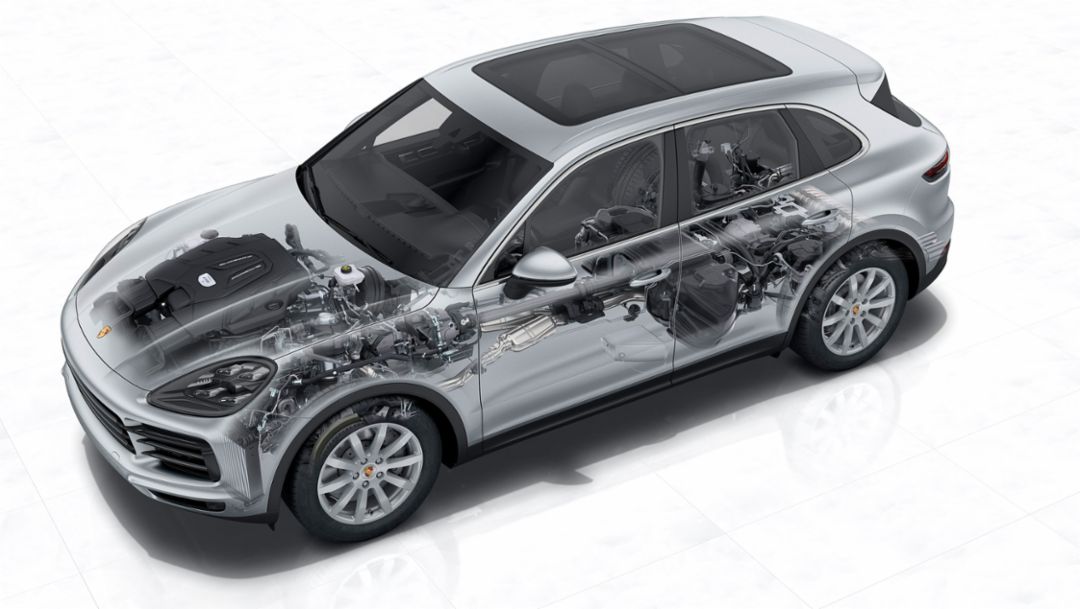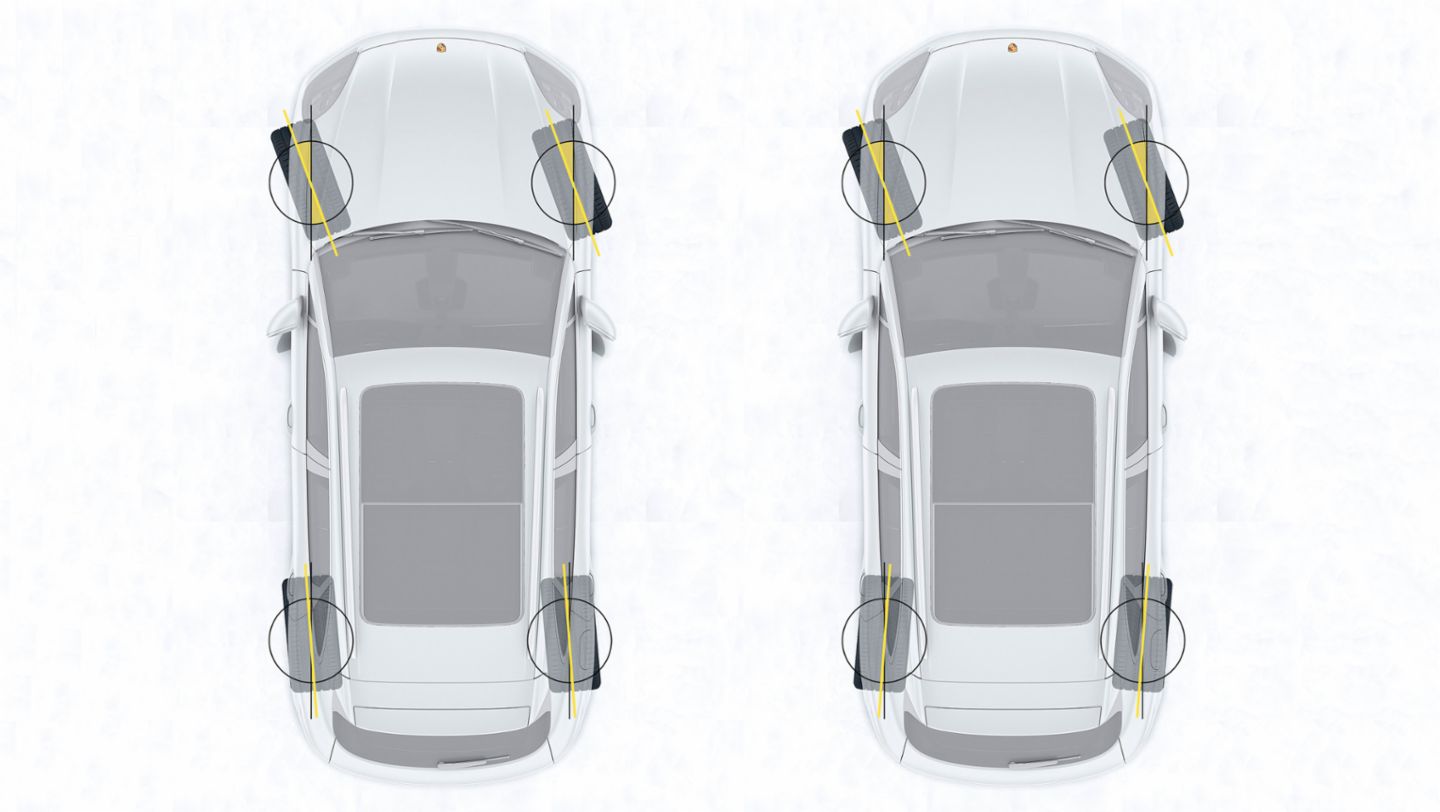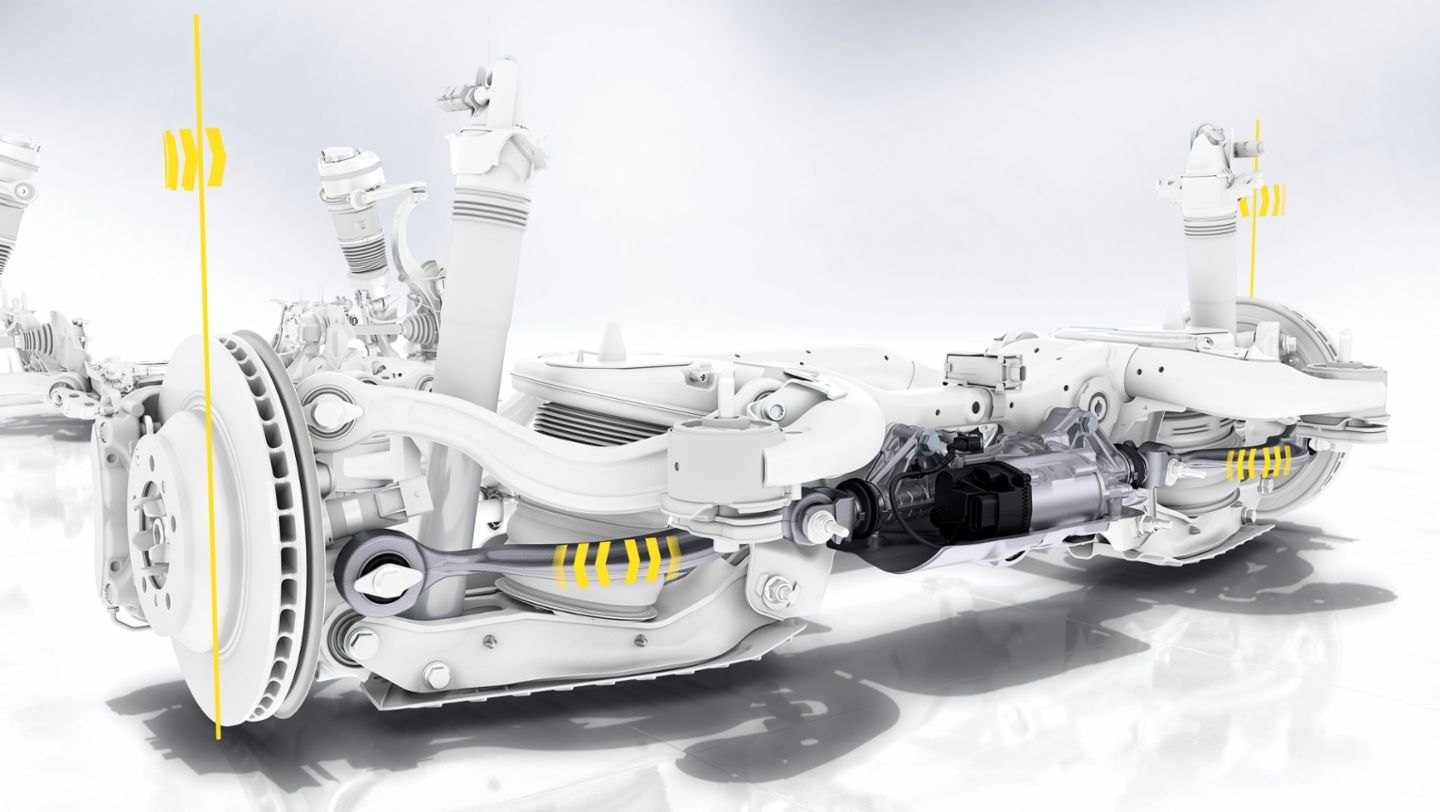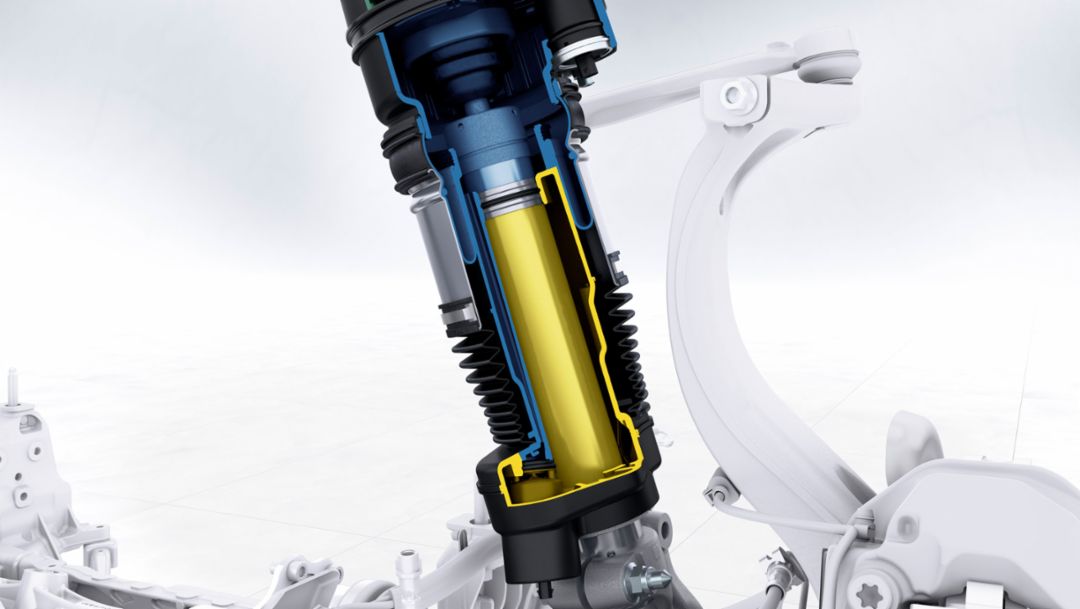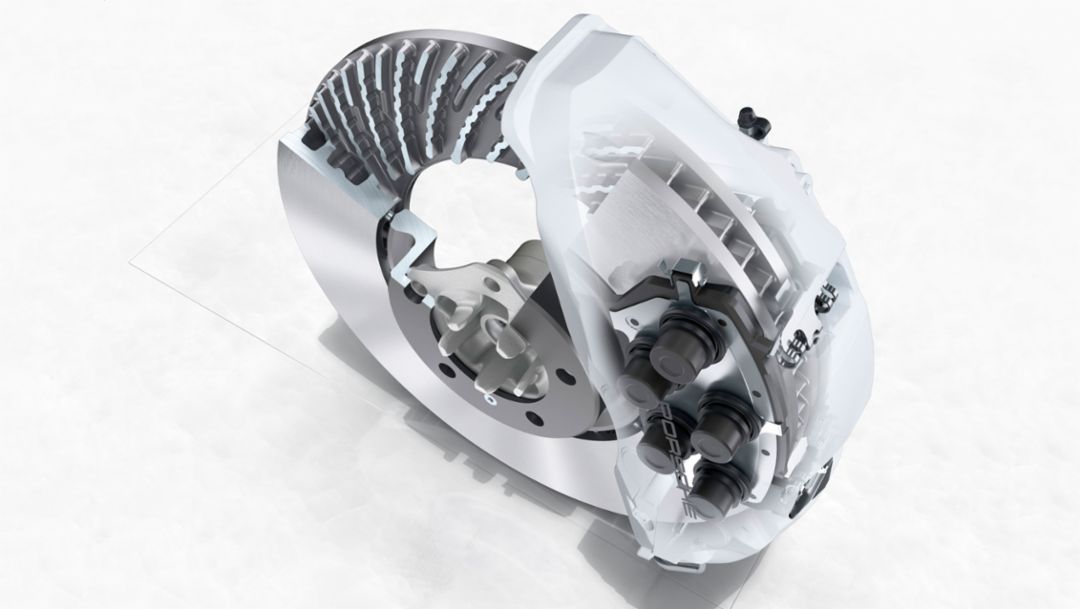This involved developing a new lightweight chassis base with a front axle featuring a separated link design and a multi-link rear axle. A typical sports car feature is the new mixed tyres, which are now on wheels of at least 19 inches. The mixed tyres improve stability and driving dynamics on bends. Porsche offers wheel sizes up to 21 inches as an option for the Cayenne.
This format provides the optimal basis for the active chassis systems, which are analysed and synchronised by the integrated Porsche 4D Chassis Control system. The system works in real time, optimising handling even further. With the exception of the active PASM damper system (as standard with the Cayenne S), all other chassis systems are new developments. For the first time, the Cayenne is available with electric rear-axle steering. The system, tried and tested both in the 911 and the Panamera, improves agility on bends and stability when changing lanes at high speeds. The reduced turning circle also makes everyday handling of the SUV easier.
The optional adaptive air suspension with new three-chamber technology significantly increases the spread between a sporty, firm connection and the driving comfort expected of a touring car. Just as before, the system enables adjustments to the ground clearance on rough terrain. With the optional Porsche Dynamic Chassis Control (PDCC) roll stabilisation, sporty drivers benefit by changing from a hydraulic to an electric system. This switch is made possible by a powerful 48-volt vehicle electrical system. Shorter response times enable even more precision in the driving dynamics – and even more comfort on moderate drives.
Even on rough terrain, the Cayenne provides straightforward driving pleasure. Programmed off-road modes make it easy for the driver to select the right setup for their drive. The default setting is the Onroad programme. Four other modes activate the conditioning for mild off-road terrain: Mud, Gravel, Sand or Rocks. The drive, chassis and differential locks can be selected to adapt to the relevant scenario. For power distribution, Porsche utilises the active all-wheel drive in all Cayenne models. The intelligent, fully variable Porsche Traction Management (PTM) distributes the driving force between the drive axles. Its hang-on concept is a key principle for the excellent sporting performance of the Cayenne. At the same time, it fulfils all requirements for extensive traction on rough terrain.
World première: Porsche Surface Coated Brake with tungsten-carbide layer
With the innovative Porsche Surface Coated Brake (PSCB), the sports car manufacturer is once again assuming a pioneering role in the development of high-performance brakes. This world first is available as an option for all Cayenne models and consists of a cast-iron disc with a tungsten-carbide coating. This finish increases the friction values and wear and brake dust are reduced.
The brake, exclusive to Porsche, is also visually impressive: The brake callipers are painted white, while the surface of the discs develops a unique gloss level after bedding-in. The PSCB is only available in combination with the 21-inch wheels. The PCCB ceramic brakes remain the top system in the range.
Consumption data
Cayenne: Fuel consumption combined 9.2–9.0 l/100 km; CO2-emissions 209–205 g/km
Cayenne S: Fuel consumption combined 9.4–9.2 l/100 km; CO2-emissions 213–209 g/km
